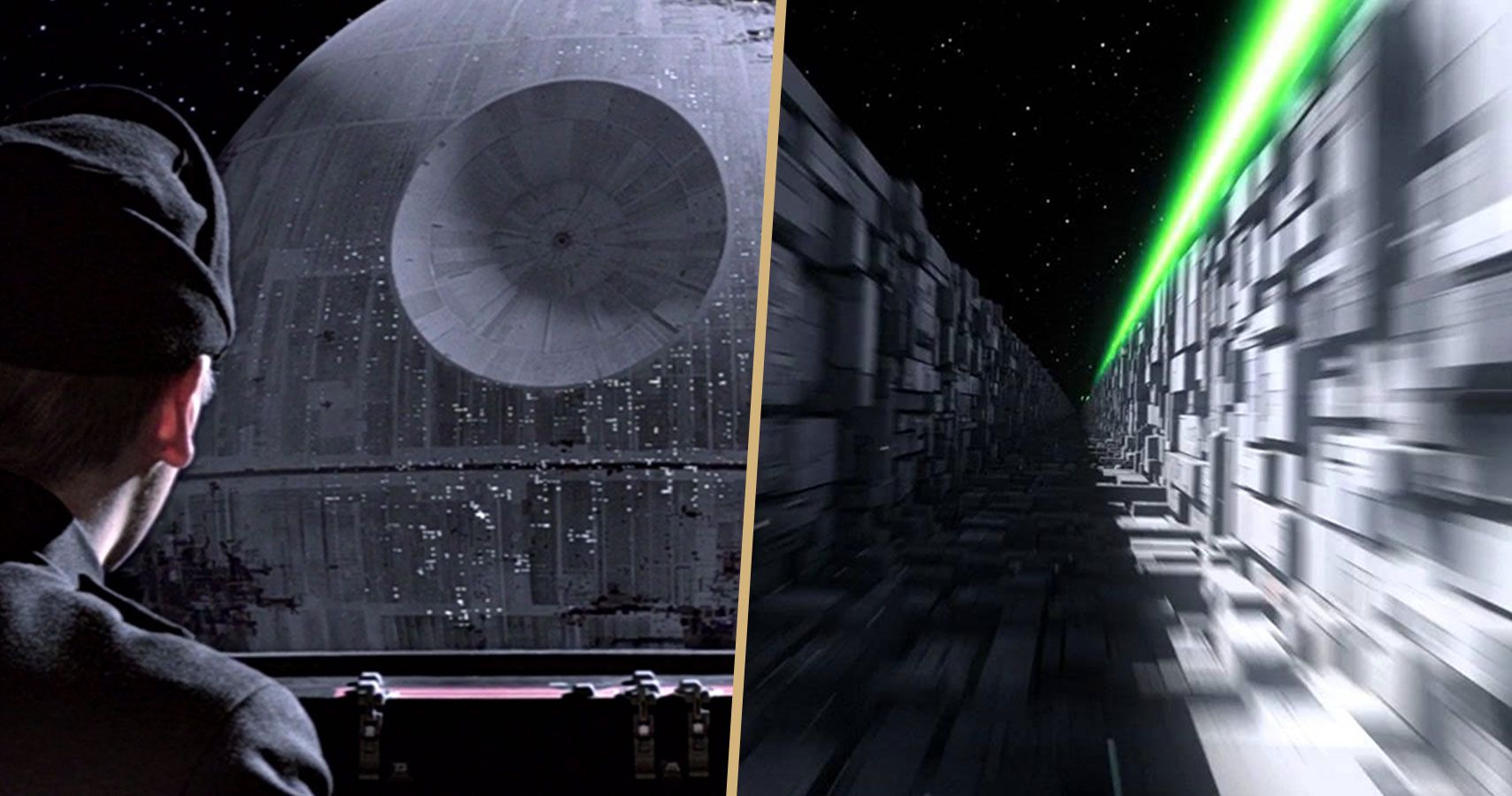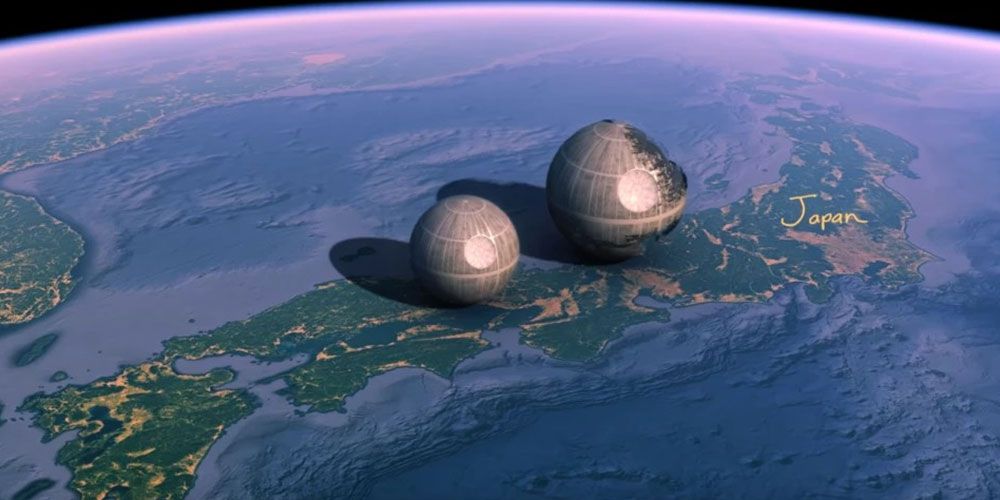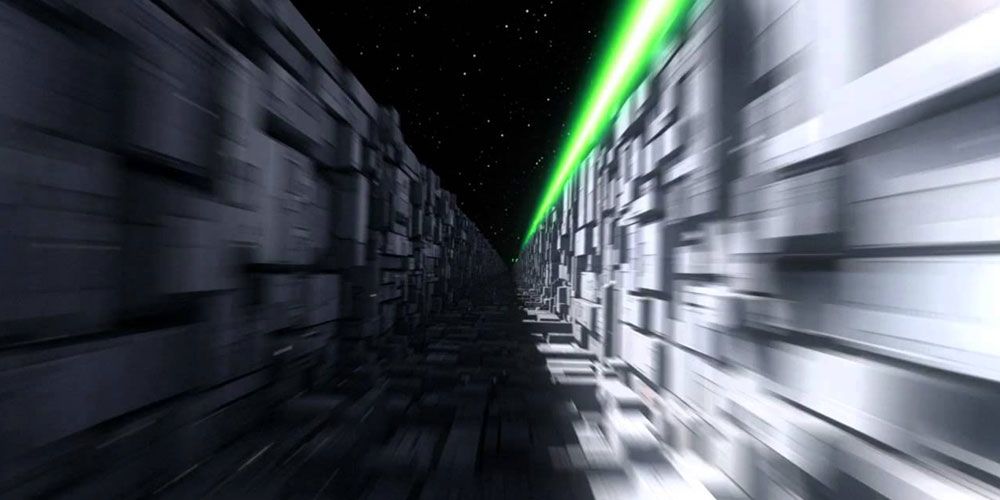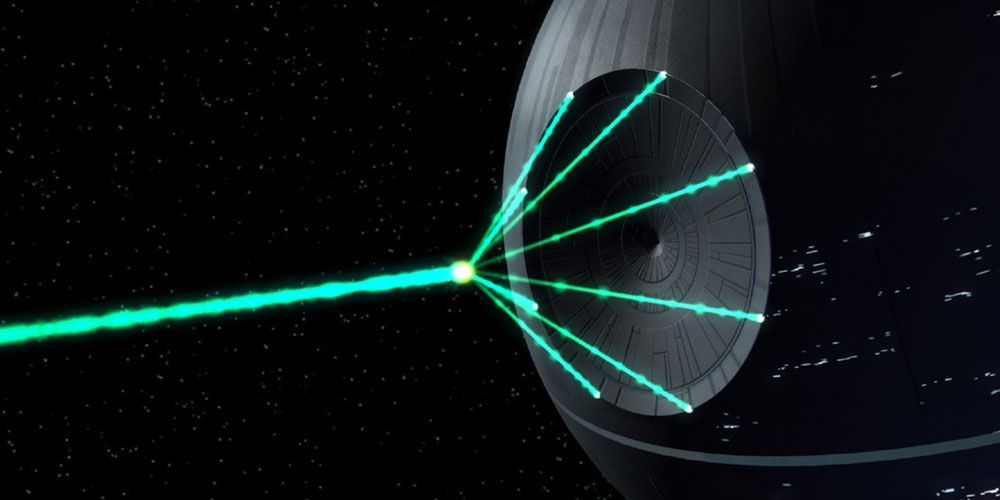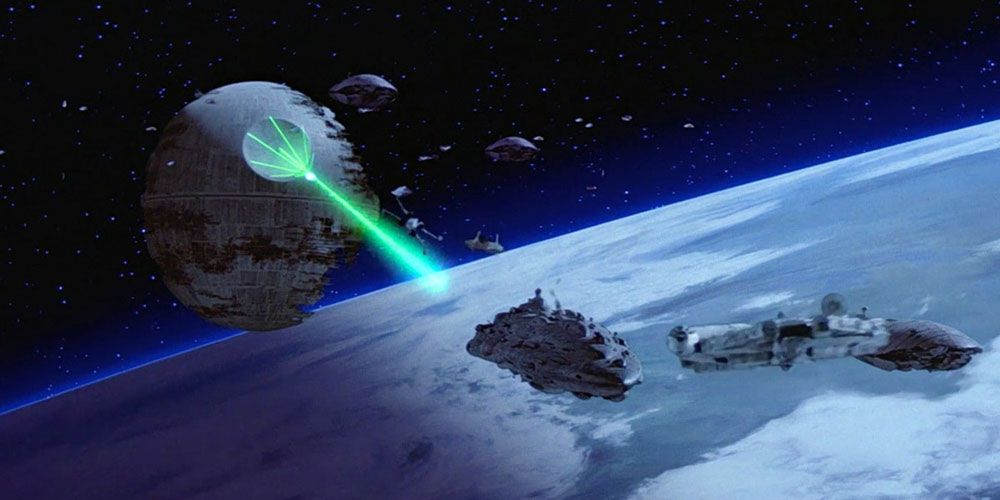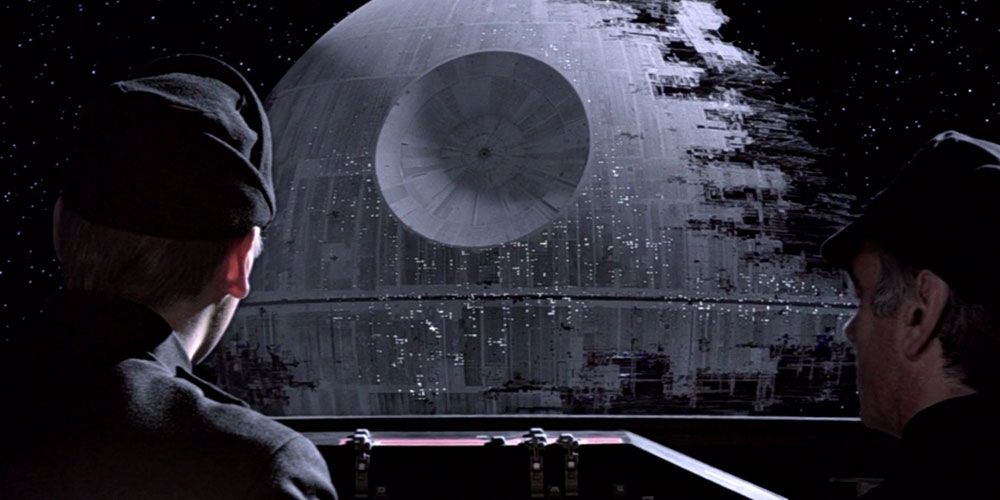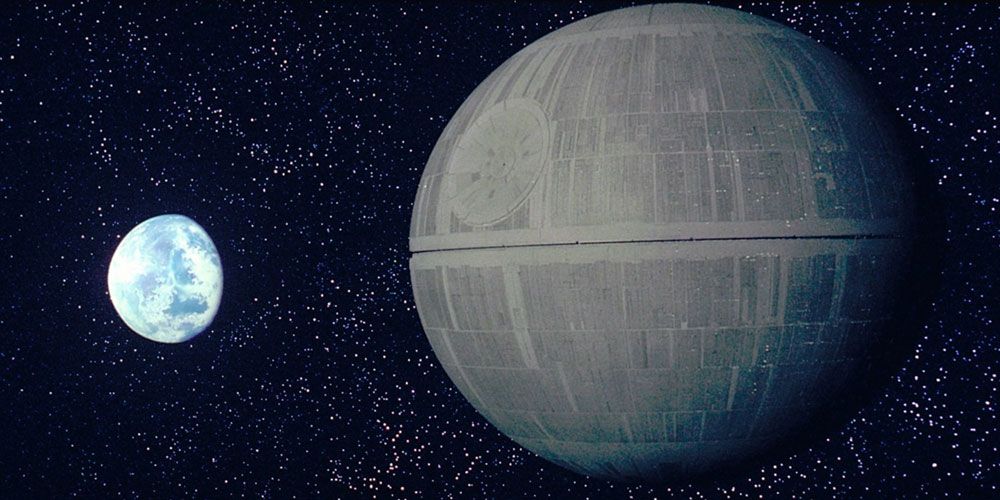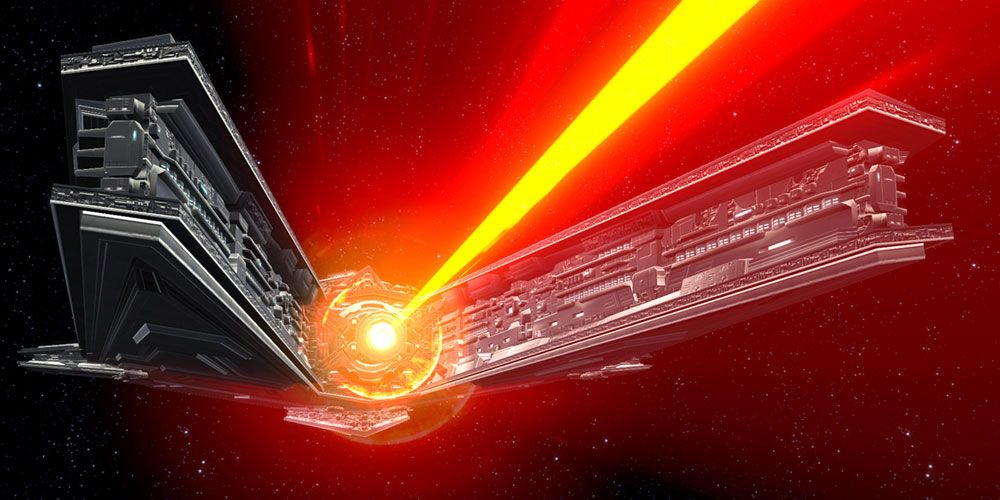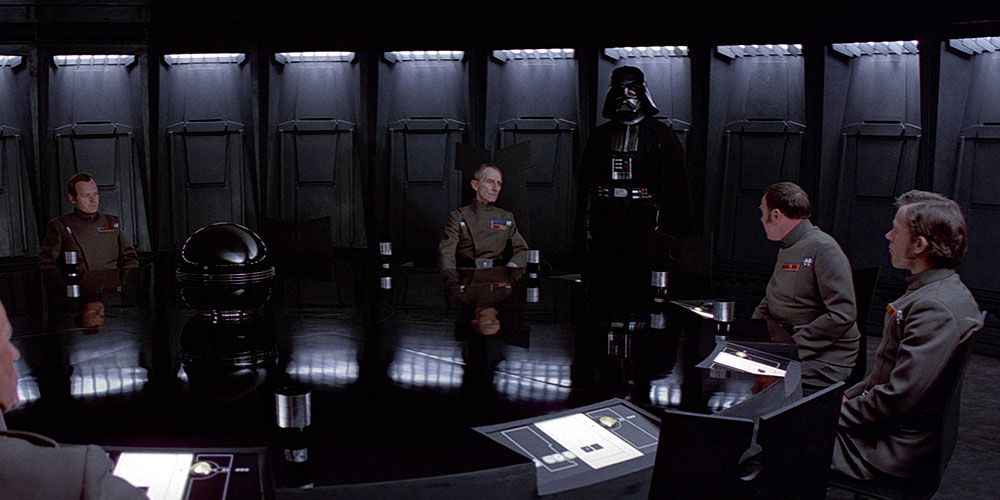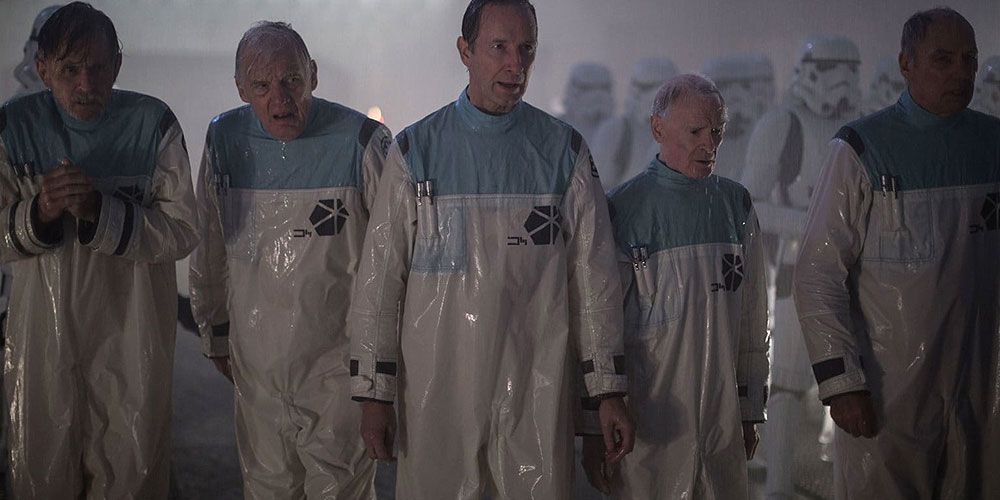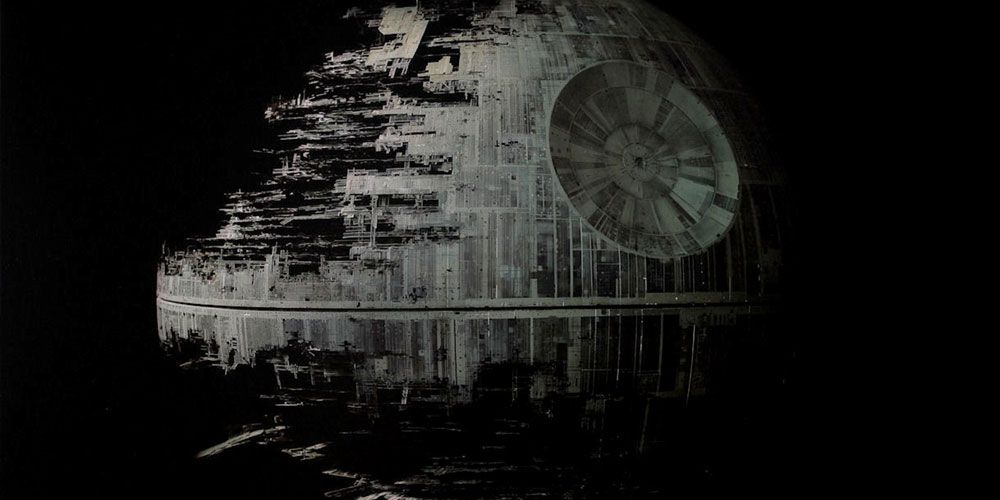The dreaded Death Star was a major plot device in the original Star Wars trilogy, and the Galactic Empire created two of them for the purpose of terrorizing an increasingly rebellious galaxy into submission. The plan would have worked had it not been for those meddling kids. This planetoid structure was a marvel of engineering design and construction, and would have served as the ultimate symbol of oppression if allowed to run amok.
Thankfully, both Death Stars were destroyed by the Rebel Alliance fleet, but not due to any actual design flaws. In the end, one man's conscience and another man's evil ambitions would lead to the downfall of both battle stations. Here are the ten top secret facts about the Death Star that only Bothans (or die-hard Star Wars fans) could possibly know.
Size & Dimensions
The original Death Star was quite a sight to behold, clocking in at 160 kilometers in diameter and spanning 357 interior levels. To put this into perspective, Earth's moon is about 3,474 kilometers in diameter. That may seem like a huge difference, but given the engineering feats required to bring the Death Star to life, it's still impressive.
Its ill-fated brother was even larger at 200 kilometers in diameter with a grand total of 560 internal levels. It's highly probable that the Empire was already working on plans to construct much larger battle stations as research and development continued, which is a scary thought.
The Outer Shell Plating
The exteriors of both Death Stars were made out of Quadanium steel, a durable metal derived from material found on the planet Despayre. Several ships in the Empire also utilized Quadanium steel for defensive purposes, including particular TIE fighter variants.
Ironically, Despayre is where the primary construction of the first Death Star took place after it had been relocated from Geonosis at the end of the Clone Wars. Legends material states that Governor Tarkin tested the Death Star's super laser by firing at it three times, eventually blowing it to smithereens.
The Weapon
Darth Sidious envisioned the Death Star as an extension of the very same power that fueled a lightsaber - Kyber Crystals. These Force-attuned materials came with properties that made lightsabers function while giving them their nearly-unstoppable cutting power. The crystals were married to a reactor that broke down hypermatter, a fuel used for hyperdrive engines.
The Death Star was powered by giant Kyber Crystals uprooted from wherever the Empire could locate them, such as the planet Ilum. Exactly how many crystals were needed is not specified, but the fact that two Death Stars managed to develop fully operational super lasers suggests quite a lot.
The Second Death Star's Super Laser
After the destruction of the first Death Star, the Emperor immediately moved ahead on the construction of the second. This one had a few notable improvements that not only buttoned-up design flaws but refined its main super laser.
This laser could cool down and recharge for another shot in mere minutes as opposed to hours, which was a significant upgrade. It could also tighten its beam and track much smaller targets such as capital ships, making it an all-purpose battle station as opposed to a fully dedicated planet-cracker.
The Empire Refined Its Techniques
Building the second Death Star was far easier and faster due to the immense knowledge gained through both the R&D and production process required to build the first. Notes were taken and subsequently studied, allowing the Empire to develop its successor at a much faster rate.
What took twenty years to build was ultimately whittled down to just several. Even though the second Death Star was incomplete at the time of its destruction, it was nevertheless operational. Final construction would have commenced quickly, paving the way for more frightening superweapon development.
It Had A Gravitational Pull
Although the Death Star's internal gravity was man-made, its sheer size meant that it also had a natural gravitational force as well. This forced designers to consider a multitude of factors into orbit, hyperdrive, and troop compliments.
In fact, TIE fighters were forced to take off from the Death Star the same as they would if they were leaving the atmosphere of a real planet. This puts it on par with real-life objects such as large asteroids and planetoids which also have their own gravitational pull.
It Had Sith Origins
Although the idea for a moving planetoid was an idea shared by many major design firms across the galaxy, its malevolent intentions were almost entirely Sith-based in nature. Millennia before the Battle of Yavin, the Sith Empire's most powerful members were already flirting with the idea of a superweapon capable of cracking open a planet.
The decision to use Kyber Crystals as the source for the super laser was also a product of Sith hypothesis and conceptualization. Their dark intentions for the Death Star would be married to a relatively straightforward defensive platform and turned into what Darth Sidious hoped would be a long-lasting symbol of the dark side's power.
Its Production Was Classified
Such a monumentally dangerous project would have certainly raised a few eyebrows, but Darth Sidious took necessary steps to keep key individuals out of the loop when it came to the Death Star's construction. A handful of contractors from major corporations were enticed to join the project under the promise of unlimited Republic funding, which was a big reason for its secrecy.
Second, Sidious purposely kept the Jedi in the dark regarding the project while simultaneously forcing those involved to sign the Official Secrets Oath. Sidious relied heavily on the narrative that the Separatists may have been trying to create their own Death Star, thus necessitating a superweapon arms race that never materialized.
It Was Met With Fierce Resistance
Darth Sidious attempted to compartmentalize information regarding the Death Star on a need-to-know basis, with only his most trusted officers aware of its true purpose. Many involved in its production became disillusioned and fled the project when they determined what was really going on.
This included scientists and technicians with high-security clearance levels who went AWOL and were subsequently tracked down by the Empire. The most prominent of these was Star Wars: Rogue One's Galen Erso, the man responsible for implementing the exhaust port design flaw that gave the Rebels a fighting chance at the Battle of Yavin.
We Don't Have Enough Money To Build One
The real world sees large-scale construction projects in the billions of dollars while viewing the world's economy in trillions. That's a drop in the bucket compared to what it would take to build a Death Star and keep the thing operational for more than thirty seconds.
Forbes estimated that it would cost an eye-watering $852 quadrillion dollars just to build it, while British energy supplier Ovo calculated a cost of $7.8 octillion (yes, that's a thing) dollars to run it for a mere 24 hours. In fact, one round of laundry would set the Empire back $200 million dollars. Clutch your pillow tightly.

